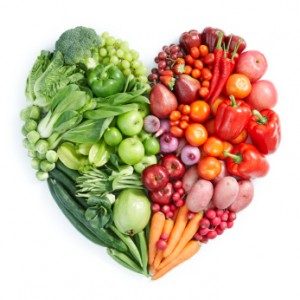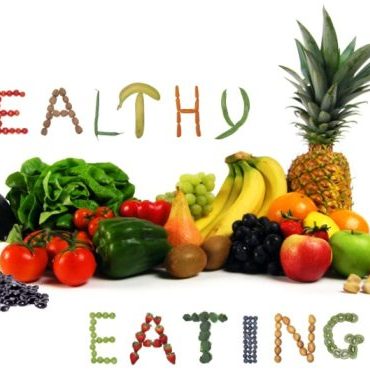 LOTL’s resident nutritionist answers your questions about sushi, getting that post-baby body into shape and healthy eating tips.
LOTL’s resident nutritionist answers your questions about sushi, getting that post-baby body into shape and healthy eating tips.
Can you please tell me about G6PD deficiency and what you recommend about diet? I have just been diagnosed and finding things difficult.
G6PD Diet Recommendations
G6PD deficiency occurs when your body does not produce adequate amounts of glucose-6-phosphate dehydrogenase, an enzyme that assists proper red blood cell function. This inherited condition affects about 400 million people worldwide, according to the Deployment Health and Family Readiness Library. Although chronic stress, infections and prescription medications can initiate haemolytic episodes — periods when a lack of the G6PD enzyme can cause fatigue, jaundice, dark urine or an elevated heart rate — you can also experience these potentially life-threatening symptoms after ingesting certain foods. Therefore, it is wise to follow the recommended G6PD diet to remain asymptomatic.
Approved Foods
Consume fats from natural fat sources such as coconut oil, olive oil, palm oil or animal fat. Obtain your vitamins and minerals from natural sources such as bone stock soups. Eat a wide variety of vegetables, especially green, leafy vegetables, such as kale, lettuce, spinach and cabbage. Round out your diet with proteins and carbohydrates not found on the G6PD Deficiency forbidden foods list.
Forbidden Foods
The G6PD Deficiency website lists several foods that you should not eat at any time. Do not consume foods or supplements that contain large amounts of VItamin C, also called ascorbic acid, or artificial blue dyes. Do not eat menthol or menthol-containing foods such as breath mints or candy. Do not eat legumes, such as lima beans, fava beans, kidney beans or soybeans. Additionally, do not consume any soy-containing products, such as tofu, bean curds, miso or textured soy protein. Also, do not consume not-easily-recognizable legumes such as alfalfa sprouts, peanuts, licorice or carob.
Additional foods forbidden by G6PDDeficiency.org include peas such as green peas, field peas and black-eyed peas, beans such as black beans or refried beans and edible pods such as Chinese pea pods and snow peas. Do not drink tonic water or eat bitter melon, a vegetable common in African and Asian cuisine. Finally, do not eat refined sugar, high-fructose corn syrup or white flour.
Considerations
Avoid already prepared Chinese foods. These foods can contain herbs that could provoke a haemolytic episode. These herbs include Flos Chimonanthi praecosis, Rhizoma coptidis, margarita, Flos ionicerae and Calculus Bovis. Furthermore, avoid packaged foods that might contain forbidden food ingredients. These foods include margarine, jarred salad dressings, canned soups, potato chips, canned fish and meats, hot dogs, sausages, processed meats, low-fat cheeses and sauces such as sweet and sour sauce or Worcestershire sauce.
Warning
Ask your doctor for an updated G6PD deficiency forbidden foods list every six months to ensure that you do not continue to eat foods shown to initiate haemolytic episodes. Your doctor might also suggest that you hire a registered dietitian familiar with this disorder to better ensure that your nutritional needs are met in relation to your other current medical conditions.
 What are carbohydrates and why are they important?
What are carbohydrates and why are they important?
Carbohydrates are all about energy and are found in foods like fruits, vegetables, bread, pasta, and dairy products. Your body uses these foods to make glucose, which is your body’s main energy source. Glucose is a type of sugar that can be used right away for energy or stored away to be used later. Carbohydrates provide the body with the energy it needs and is a good source of many vitamins and minerals. However, not all carbohydrates are created equal. The best carbohydrates are those that contain a lot of fibre, like vegetables, fruits, and whole grains. These types of carbohydrates take longer to break down into glucose and give you the most nutrients along with your calories. Refined carbohydrates are sometimes referred to as “bad” carbohydrates. These are carbohydrates that have been processed to remove parts of the grain and have had sugar added. Common examples of refined or processed carbohydrates are white bread, cakes, and biscuits.
Carbohydrates are sugars, starches, and fibres found in most foods. While they are perhaps most famous for their role in fueling our body’s energy needs, carbohydrates (often referred to as “carbs”) actually serve a wide variety of purposes in the body, including regulation of digestion, enabling of communication between cells, and support of immune functions.
Carbohydrates are composed of carbon, hydrogen, and oxygen, which are arranged into small units called sugars, or monosaccharides. Small carbohydrates, like glucose or sucrose (table sugar), are composed of one or two sugar units, respectively, and are the molecules that give food a sweet taste. These molecules are sometimes called “simple sugars” because they are small (only one or two units), and are quickly digested, providing immediate energy to the body.
Larger carbohydrate molecules, which include fibres and starches, are composed of at least twenty or more monosaccharides linked together. These large carbohydrates, called polysaccharides (poly=many) may contain up to several hundred monosaccharides linked together in different ways. Another term commonly used to describe carbohydrates is oligosaccharides, a type of carbohydrate molecule that is in between polysaccharides and monosaccharides in size and features three to twenty monosaccharides bonded together. You might also hear the term “disaccharides” when carbs are mentioned, and this term refers to molecules that contain two simple sugars.
Is canned beetroot as nutritious as fresh beetroot?
It’s worth trying canned beetroots even if you don’t prefer canned vegetables. Unlike other vegetables that taste different from their fresh or frozen counterparts, canned beets retain a flavour that rivals fresh beets. They also maintain about the same nutritional value as of fresh beetroots, giving you a good source of fibre, iron and folate. Convenience, shelf-life and cost are benefits of canned beetroots. Canned vegetables retain their nutrients for two years, so you can buy them on sale, stock the pantry and have them available any time. Even when they’re not on sale, canned beetroots usually cost less, sometimes even half the cost of fresh beets. Having beetroots that are already cooked and ready to use is a time-saving benefit because fresh beets take 35 to 60 minutes to cook and then they must be peeled before you can use them in a dish.
With only a few exceptions, canned beetroots have about the same nutritional value as of fresh beetroots. Fresh beetroots have double the phosphorus, potassium and folate, but 1 cup of sliced, canned beetroots has 14 per cent of the recommended daily intake of folate and 4 per cent of phosphorus and potassium. The same serving size has barely a trace of fat and only 31 calories, yet it delivers 8 per cent of the daily intake of dietary fibre. Men get 37 per cent and women gain 16 per cent of their recommended daily intake of oxygen-carrying iron in a serving. You’ll also gain 7 per cent of the recommended daily intake of vitamins C, B-6 and K as well as magnesium.
Beetroots have pigments called betalains that are responsible for the beetroot’s colour. These pigments provide health benefits by functioning as antioxidants, lowering inflammation and reducing your risk of heart disease. One of the betalains — betaine — helps prevent and treat nonalcoholic fatty liver.
 What is Type 1 diabetes?
What is Type 1 diabetes?
Type 1 diabetes can occur at any age. However, it is most often diagnosed in children, adolescents, or young adults.
Insulin is a hormone produced by special cells, called beta cells, in the pancreas. The pancreas is found behind your stomach. Insulin is needed to move blood sugar (glucose) into cells, where it is stored and later used for energy. In type 1 diabetes, beta cells produce little or no insulin.
Without enough insulin, glucose builds up in the bloodstream instead of going into the cells. The body is unable to use this glucose for energy. This leads to the symptoms of type 1 diabetes.
The exact cause of type 1 diabetes is unknown. Most likely it is an autoimmune disorder. An infection or some other trigger causes the body to mistakenly attack the cells in the pancreas that make insulin. This kind of disorder can be passed down through families.
These symptoms may be the first signs of type 1 diabetes, or may occur when the blood sugar is high:
- Being very thirsty
- Feeling hungry
- Feeling tired or fatigued
- Having blurry eyesight
- Losing the feeling or feeling tingling in your feet
- Losing weight without trying
- Urinating more often
For other people, these warning symptoms may be the first signs of type 1 diabetes, or they may happen when the blood sugar is very high
- Deep, rapid breathing
- Dry skin and mouth
- Flushed face
- Fruity breath odour
- Nausea or vomiting, inability to keep down fluids
- Stomach pain
What is the Glycaemic Index?
The Glycaemic Index (GI) is a numerical scale used to indicate how fast and how high a particular food can raise our blood glucose (blood sugar) level. A food with a low GI will typically prompt a moderate rise in blood glucose, while a food with a high GI may cause our blood glucose level to increase above the optimal level.
An awareness of foods’ Glycaemic Index can help you control your blood sugar levels, and by doing so, may help you prevent heart disease, improve cholesterol levels, prevent insulin resistance and type-2 diabetes, prevent certain cancers, and achieve or maintain a healthy weight. A substantial amount of research suggests a low GI diet provides these significant health benefits. So, it’s worth taking a look at the basic principles of a low GI way of eating.
High carbohydrate foods, even wholesome foods that are high in carbohydrates such as satisfying whole-grain bread, delicious fruits, starchy vegetables, and legumes, can have an effect on blood glucose.
Carbohydrate-rich foods include:
- Starches, which are found in foods such as
- Grains (foods made from wheat, barley, rice, etc.)
- Legumes, (split peas, lentils and dry beans such as pinto, kidney, black, etc.)
- Starchy vegetables (potatoes, winter squash, yams, etc.)
- Sugars, such as those naturally found in fruits and dairy products as well as packaged sweeteners, and sugars added in processing.
- Fibre—the indigestible portion of carbohydrates. However, even though fibre is considered a carbohydrate, since it is not digested (except sometimes very late in the digestive process by bacteria in the large intestine), does not directly raise blood glucose levels.
After we eat carbohydrate-rich foods, our digestive process usually breaks them down and eventually turns them into glucose, which can then enter our bloodstream. (Since most proteins and fats from food are not turned into glucose by this same process, they typically have much less of an immediate effect on our blood sugar).
The presence of glucose in the bloodstream usually triggers the production of insulin, a hormone that helps glucose get into cells where it can be used for energy. Once our immediate energy needs have been met, extra glucose still remaining in the bloodstream can be stored in our muscles and liver for later use. If our muscle and liver stores of glucose are full, but we still have extra glucose floating around in our blood, then insulin can help our body store this excess sugar as fat.
Since insulin helps glucose get into cells where energy is made, insulin is vital to fueling the body. However, too much insulin secretion over long periods of time can cause problems. Research shows that prolonged exposure to elevated levels of insulin can cause:
- high triglycerides
- high “bad” LDL cholesterol
- low “good” HDL cholesterol
- high blood pressure
- insulin resistance
- increased appetite
- obesity
- risk of developing or exacerbating type 2 diabetes
When a certain combination of these disease-promoting factors is present all at once, the constellation of symptoms is called Metabolic Syndrome. The presence of these symptoms also raises a person’s risk of cardiovascular disease, diabetes, and prostate or breast cancer. In studies reported in the American Journal of Clinical Nutrition in 2002, diets high in carbohydrates that had a high GI were linked to a greater risk of coronary heart disease. Several prospective observational studies have shown that the continual eating of foods with a high GI is linked to an increased risk of developing chronic conditions such as cardiovascular disease, type 2 diabetes and certain cancers. In a recent study that evaluated more than 65,000 American women, a high dietary GI was positively associated with an increased risk for type 2 diabetes.
An article appearing in the October 2003 issue of Critical Reviews in Food Science and Nutrition by Drs. Stacey Bell and Barry Sears explain in detail what happens metabolically when a high glycaemic load meal or snack is eaten. (The glycemic load represents the food’s glycaemic index multiplied by the quantity of the food consumed by weight.)In their study of healthy volunteers, Bell and Sears found that two hours after eating a high glycaemic load meal, blood sugar levels were twice as high as the levels that resulted from consumption of a low glycaemic load meal. These high blood sugar levels triggered the synthesis and release of insulin, our key hormone for getting sugar back out of the bloodstream and into the cells.
While a single, high-GI meal might not cause significant health problems for our body, frequent consumption of high glycaemic load meals can result in perpetually high insulin levels. When insulin levels stay high, our endocrine system can start out on a rollercoaster ride in which the body tries to adjust to its perpetually high insulin level with changes in other hormone levels that can leave us both tired, hungry, and on a course toward increased risk of cardiovascular disease and type 2 diabetes.
By contrast, many or all of these unfavourable hormonal shifts become less likely when a meal with a low glycaemic load is eaten. Since low glycaemic meals take longer to digest and absorb, and nutrients are released gradually, blood sugar levels tend to remain more stable and insulin levels tend to rise in a non-risky fashion. As an added benefit, a low glycaemic way of eating is associated with lower levels of LDL-cholesterol and triglycerides. Bell and Sears suggest that an optimal glycaemic load diet would keep the glycaemic load under 50 and be made up of 40% low glycaemic index/glycaemic load carbohydrates, 30% low-fat protein, and 30% fat.

